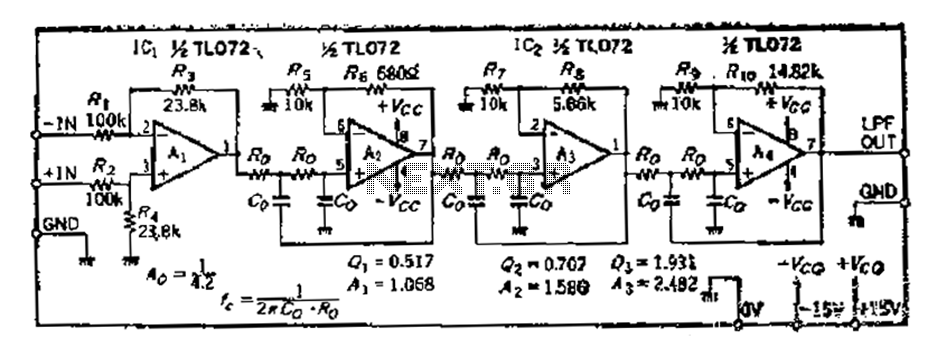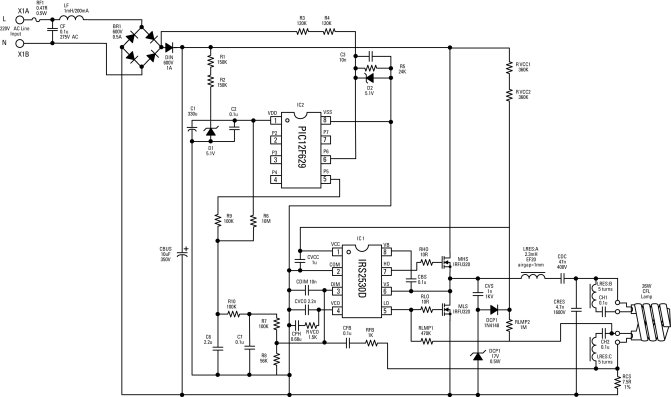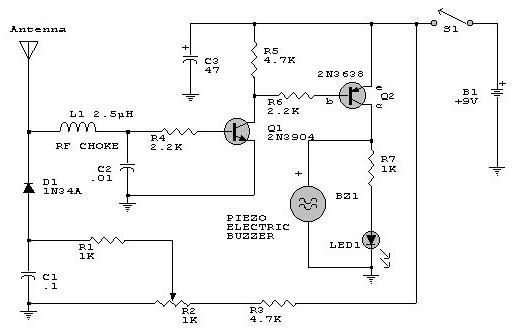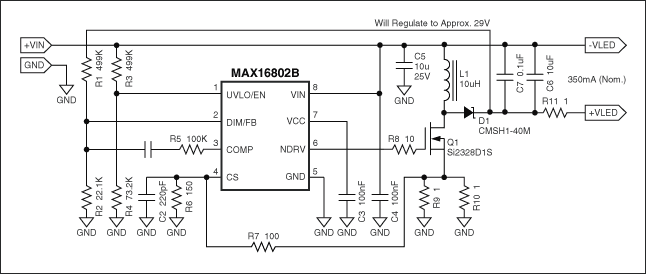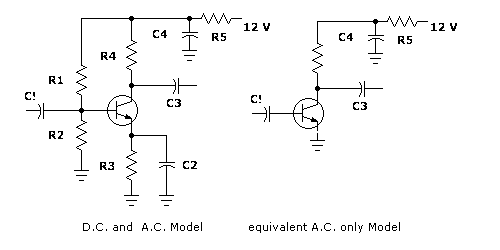
Music Instrument design
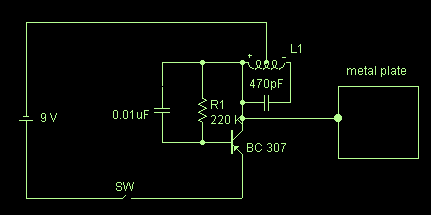
For those who don't know what a Theremin is, it's one of the first synths ever made and it's named after his inventor, Mr. Leon Theremin (a Russian guy). It's perhaps the only instrument which you don't actually touch: there's an antenna, and as the musician moves his hand near it, the pitch changes. That's the thing Page used in "Whole Lotta Love" (he used it with an echo, to get even weirder). This circuit is a very simplified version of a theremin, but is also very easy to build and really works! More: It is a RF oscillator. As your hand moves near the metal plate, the capacitance "seen" at the collector of the transistor will change, and so will the frequency of oscillation. What you need now is an AM radio receptor (any) that will do the job of turning this to sound. A 8 cm x 8 cm square of any metal will do the job, as long as it is thin. If you use copper, you will be able to solder, with aluminum you will have to bolt on the wire to the circuit. Get a ferrite bar of 0.5 x 1 x 5.5 cm (approximate). It's that black bar you find inside AM portable receivers. Put the Theremin VERY near the AM receiver. turn SW on and search over the receiver's dial for a whistle. Now approach your hand slowly to the metal plate - the whistle's tune will change. Try moving slow, fast, shaking your hand - with some practice it's possible to get interesting sounds. Here are some not so interesting sounds... If the Theremin's center frequency lies over an existent AM station, try tuning it by making the turns of L1 closer or spaced. When you get a nice "tuning", you can fix it in place by dropping hot candle wax over it. Don't mount it inside a metal box - use a plastic one. 2) Get about 2 m of copper wire number 24 or 26. You can "steal" it from a burnt transformer. 3) Wire 70 turns of this wire over the ferrite bar. Solder the "center tap" at turn number 35 (you will have to scrap the varnish).
The Theremin circuit operates as a simple RF oscillator, utilizing the principles of capacitance and inductance to generate sound. The primary component involved in frequency modulation is a metal plate, which acts as a capacitive sensor. When a hand approaches the plate, the capacitance at the collector of the transistor changes, thereby altering the frequency of oscillation. This change in frequency can be detected by an AM radio receiver, which converts the oscillations into audible sound.
To construct the Theremin, a metal plate measuring approximately 8 cm x 8 cm is required. The choice of material can be copper or aluminum; copper allows for soldering connections, while aluminum necessitates bolting. A ferrite bar, typically measuring 0.5 x 1 x 5.5 cm, serves as the core for the oscillator's inductor. The construction involves winding 70 turns of copper wire (gauge 24 or 26) around the ferrite bar, with a center tap soldered at the 35th turn. The varnish on the wire must be scraped to ensure a good electrical connection.
Once assembled, the Theremin should be positioned close to the AM receiver. The receiver needs to be tuned to detect the oscillations produced by the Theremin. It is advisable to turn on the receiver and slowly adjust the dial until a whistle or tone is heard. As the hand approaches the metal plate, the pitch of the whistle will vary, allowing for expressive sound manipulation. Experimentation with hand movements can yield a range of sounds, from subtle variations to more pronounced effects.
For optimal performance, it is recommended that the Theremin not be housed in a metal enclosure, as this may interfere with the oscillation frequencies. A plastic enclosure is preferred to maintain the integrity of the circuit. Additionally, if the center frequency of the Theremin aligns with an existing AM station, adjustments can be made by altering the spacing of the inductor turns (L1). Securing the desired configuration can be accomplished by applying hot candle wax to the inductor.For those who don't know what a Theremin is, it's one of the first synths ever made and it's named after his inventor, Mr. Leon Theremin (a Russian guy). It's perhaps the only instrument which you don't actually touch: there's an antenna, and as the musician moves his hand near it, the pitch changes.
That's the thing Page used in "Whole Lotta Love" (he used it with an echo, to get even weirder). This circuit is a very simplified version of a theremin, but is also very easy to build and really works! It is a RF oscillator. As your hand moves near the metal plate, the capacitance "seen" at the collector of the transistor will change, and so will the frequency of oscillation. What you need now is an AM radio receptor (any) that will do the job of turning this to sound. A 8 cm x 8 cm square of any metal will do the job, as long as it is thin. If you use copper, you will be able to solder, with aluminum you will have to bolt on the wire to the circuit.
Get a ferrite bar of 0.5 x 1 x 5.5 cm (approximate). It's that black bar you find inside AM portable receivers. Put the Theremin VERY near the AM receiver. turn SW on and search over the receiver's dial for a whistle. Now approach your hand slowly to the metal plate - the whistle's tune will change. Try moving slow, fast, shaking your hand - with some practice it's possible to get interesting sounds. Here are some not so interesting sounds... If the Theremin's center frequency lies over an existent AM station, try tuning it by making the turns of L1 closer or spaced.
When you get a nice "tuning", you can fix it in place by dropping hot candle wax over it. Don't mount it inside a metal box - use a plastic one. 2) Get about 2 m of copper wire number 24 or 26. You can "steal" it from a burnt transformer. 3) Wire 70 turns of this wire over the ferrite bar. Solder the "center tap" at turn number 35 (you will have to scrap the varnish). 🔗 External reference
The Theremin circuit operates as a simple RF oscillator, utilizing the principles of capacitance and inductance to generate sound. The primary component involved in frequency modulation is a metal plate, which acts as a capacitive sensor. When a hand approaches the plate, the capacitance at the collector of the transistor changes, thereby altering the frequency of oscillation. This change in frequency can be detected by an AM radio receiver, which converts the oscillations into audible sound.
To construct the Theremin, a metal plate measuring approximately 8 cm x 8 cm is required. The choice of material can be copper or aluminum; copper allows for soldering connections, while aluminum necessitates bolting. A ferrite bar, typically measuring 0.5 x 1 x 5.5 cm, serves as the core for the oscillator's inductor. The construction involves winding 70 turns of copper wire (gauge 24 or 26) around the ferrite bar, with a center tap soldered at the 35th turn. The varnish on the wire must be scraped to ensure a good electrical connection.
Once assembled, the Theremin should be positioned close to the AM receiver. The receiver needs to be tuned to detect the oscillations produced by the Theremin. It is advisable to turn on the receiver and slowly adjust the dial until a whistle or tone is heard. As the hand approaches the metal plate, the pitch of the whistle will vary, allowing for expressive sound manipulation. Experimentation with hand movements can yield a range of sounds, from subtle variations to more pronounced effects.
For optimal performance, it is recommended that the Theremin not be housed in a metal enclosure, as this may interfere with the oscillation frequencies. A plastic enclosure is preferred to maintain the integrity of the circuit. Additionally, if the center frequency of the Theremin aligns with an existing AM station, adjustments can be made by altering the spacing of the inductor turns (L1). Securing the desired configuration can be accomplished by applying hot candle wax to the inductor.For those who don't know what a Theremin is, it's one of the first synths ever made and it's named after his inventor, Mr. Leon Theremin (a Russian guy). It's perhaps the only instrument which you don't actually touch: there's an antenna, and as the musician moves his hand near it, the pitch changes.
That's the thing Page used in "Whole Lotta Love" (he used it with an echo, to get even weirder). This circuit is a very simplified version of a theremin, but is also very easy to build and really works! It is a RF oscillator. As your hand moves near the metal plate, the capacitance "seen" at the collector of the transistor will change, and so will the frequency of oscillation. What you need now is an AM radio receptor (any) that will do the job of turning this to sound. A 8 cm x 8 cm square of any metal will do the job, as long as it is thin. If you use copper, you will be able to solder, with aluminum you will have to bolt on the wire to the circuit.
Get a ferrite bar of 0.5 x 1 x 5.5 cm (approximate). It's that black bar you find inside AM portable receivers. Put the Theremin VERY near the AM receiver. turn SW on and search over the receiver's dial for a whistle. Now approach your hand slowly to the metal plate - the whistle's tune will change. Try moving slow, fast, shaking your hand - with some practice it's possible to get interesting sounds. Here are some not so interesting sounds... If the Theremin's center frequency lies over an existent AM station, try tuning it by making the turns of L1 closer or spaced.
When you get a nice "tuning", you can fix it in place by dropping hot candle wax over it. Don't mount it inside a metal box - use a plastic one. 2) Get about 2 m of copper wire number 24 or 26. You can "steal" it from a burnt transformer. 3) Wire 70 turns of this wire over the ferrite bar. Solder the "center tap" at turn number 35 (you will have to scrap the varnish). 🔗 External reference
